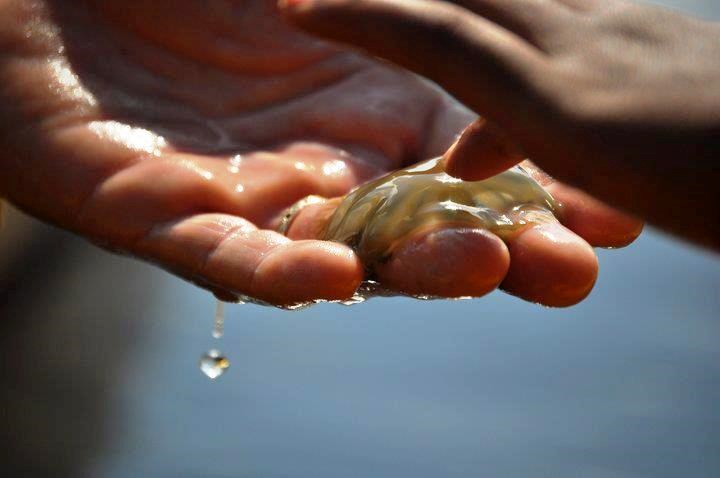I’d read so much about the dangers of jellyfish, I couldn’t believe our guide, Bob, was about to reach into the water and pick up one up-in his bare hand.
“Hmmm... I wonder if we can navigate back out through the mangroves to the beach ourselves?” I thought as visions of a suddenly incapacitated guide danced through my head.
I worried for nothing, as it turned out.
While picking up a jellyfish is not usually a good idea in most cases, if you’re dealing with Cassiopea, or the “upside-down jellyfish,” a type of jellyfish living in the mangroves of Grand Cayman Island, then you can pick it up and live to tell the tale.
It does have a mildly toxic sting, but it fits in the palm of your hand, so adult humans rarely feel it.
These jellyfish occur in Caribbean mangrove swamps and can appear in a variety of colours. In an interesting example of symbiosis, Cassiopea is sometimes picked up by the crab species, Dorippe frascone, and carried on its back to help the crab defend itself against potential predators.
The unusual jellyfish were just one of the natural wonders we experienced paddling our two-person kayak through the mangroves from the big island’s Little Sound, located just south of Rum Point.
It took us about 20 minutes to paddle across an open bay into the sheltered mangroves, although it can take longer, depending how strong, and from which direction, the wind blows the day you paddle. After that, it was pretty easy paddling through the water trails of the mangroves.
Once into the mangroves, our sit-on-top kayaks became a floating school of environmental education as our guide explained the mangrove ecology.
The area we paddled through is part of an 8,500-hectare wetland system, the central mangrove wetland, although only 1,500 hectares have environmental protection status. There are three different types of mangroves: red, black and white. They all feature unique characteristics, each one fulfilling a slightly different ecological role, providing shelter and food for different types of plant and animal life.
For example, the small upside-down jellyfish live in the red mangroves. These mangroves butt up against the ocean. Crabs, turtles, spiny lobsters and sponges also inhabit the red mangrove. Further back, the black and white mangroves provide nesting and food sources for birds like the Grand Cayman parrot, West Indian whistling duck and snowy egrets.
At one point while resting during our paddle, I swear I could hear parrots squawking off in the distance. No luck seeing any though, at least not from our kayaks. They nest in the black mangroves just out of kayak accessibility.
While we didn’t see any parrots, I did spot a cowfish, briefly. It swam up behind Bob’s kayak while we listened to him explain mangrove ecology, but quickly dove deeper when he turned around to look.
Normally, you can often see turtles and other sea creatures in the water, but the morning we went, it was fairly overcast and not great for seeing too deep into the water. Hawksbill turtles hang out here because of the number of sponges that grow in the mangroves, sponges being a favourite food of that turtle species. Guess they weren’t that hungry.
Speaking of reptiles and amphibians, at one time the Grand Cayman mangroves were home to a species of crocodile native only to the island, but they were wiped out in the 20th century to save turtles, which were being raised domestically for food at the time. However, every now and then, rumours surface that maybe way back in the furthest reaches of the mangroves there may be a few crocs still scraping out a living.
Entering the bay, we find out the wind picks up and is blowing straight into us. We have to stroke-stroke-stroke in order to make headway and our initial 20-minute trip became a 35-minute workout. At one point, I’m thinking the sponges have it pretty good. But then of course, I remember that I don’t have to worry about being eaten by a turtle.
I’ll stick to padding.



